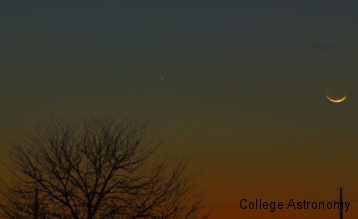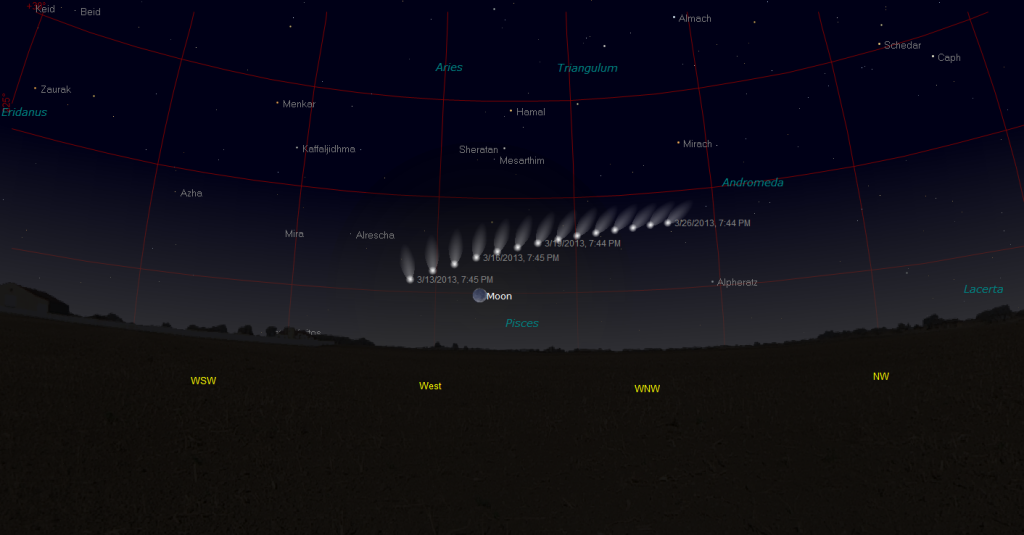I was able to catch a good glimpse of comet PanSTARRS (C/2011 L4) again this evening (March 13th). Fortunately, it was a bit warmer, the wind was lighter and the sky was just a tad clearer. The viewing didn't give quite the same level of awe as the comet being near the moon. However, I still managed to get some post worthy pictures of it.
Again, the comet was NOT visible to the naked eye from where I was viewing even with a reasonably clear sky. It was not dark at the time so in a very dark location it just might be visible but even in that scenario, the comet is extremely small in the night sky so will probably only show up as a fuzzy pin-prick in the fabric of it all.
On March 14th, if you're up for it with binoculars or a telescope (or decent camera) you should be able to catch it around 10 degrees above the horizon almost due West for the next several nights. Please see my former posts for details and charts of roughly where it will be located.


